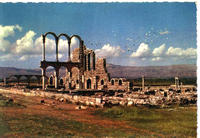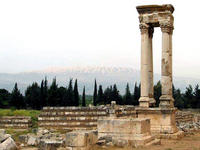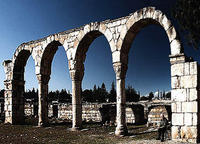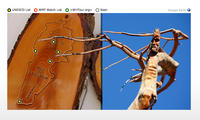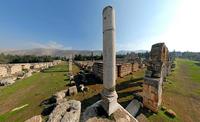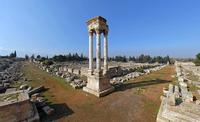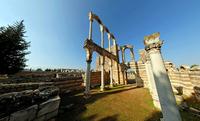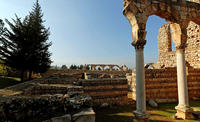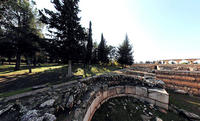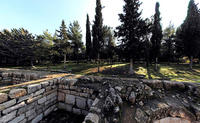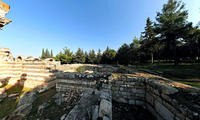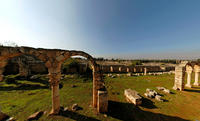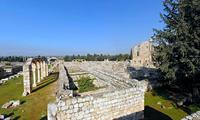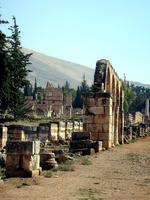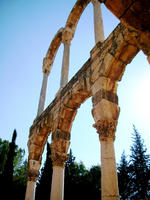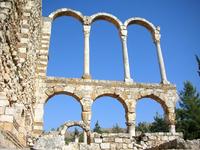You are in: Middle East -> Lebanon -> Anjar, and traditional search or Image Gallery will yield results of this site only
Anjar
| Site number: | 293 |
|
| Type of site: | Cultural | |
| Date: | 8th century | |
| Date of Inscription: | 1984 | |
| Location: | Middle East, Lebanon, Beqaa Governorate, District of Zahle | |
Up to 75 images are shown here. Click on each for more details or on Image Gallery for more images.
| Description: | The city of Anjar was instituted by Caliph Walid I in the early 8th century. Its ruins are a unique testimony to city planning under the Umayyads; they disclose an incredibly customary layout that is reminiscent of ancient palace-cities. --WHMNet paraphrase from the description at WHC Site, where additional information is available. For 360 degree imaging of this site, click here. | |
| Anjar (Arabic: عنجر, Armenian: Անճար), also known as Haoush Mousa (Arabic: حوش موسى), is a town of Lebanon located in the Bekaa Valley. The population is about 2,400, consisting almost entirely of Armenians. The total area of its territory is about twenty square kilometers (7.7 square miles). In the summer, the population swells to 3,500, as members of the Armenian Diaspora return to visit there. Anjar is home to the Armenian Apostolic Saint Paul Church which is the second largest Armenian church in Lebanon. Formerly known as Gerrha, a stronghold built by Umayyad Caliph Al-Walid ibn Abdel Malek in the 8th century, the site was later abandoned, leaving a number of well-preserved ruins. (The present-day name derives from Arabic Ayn Gerrha, or "source of Gerrha".) The famous Umayyad ruins are now a World Heritage Site. The area adjacent to the ruins was resettled in 1939 with several thousand Armenian refugees from the Musa Dagh area of Turkey. Its six neighborhoods are named after the six villages of Musa Dagh. The refugees were aided by the French government. The Syrian Army chose it as one of its main military bases in the Beqaa Valley and more disturbingly in the eyes of most Lebanese as the headquarters of its feared intelligence services. The Syrians have since then withdrawn from the town. With the Syrian occupation gone, the people of Anjar are eager to make their town a major Lebanese tourist attraction once again. --Wikipedia. Text is available under the Creative Commons Attribution-ShareAlike License. For 360 degree imaging of this site, click here. | ||
| Source: | http://whc.unesco.org/en/list/293 | |
| Reference: | 1. UNESCO World Heritage Center, Site Page. | |





